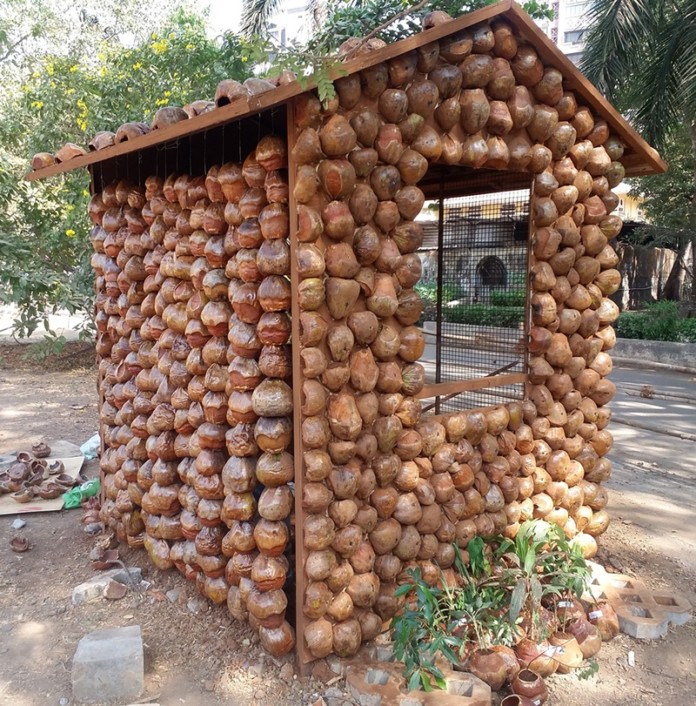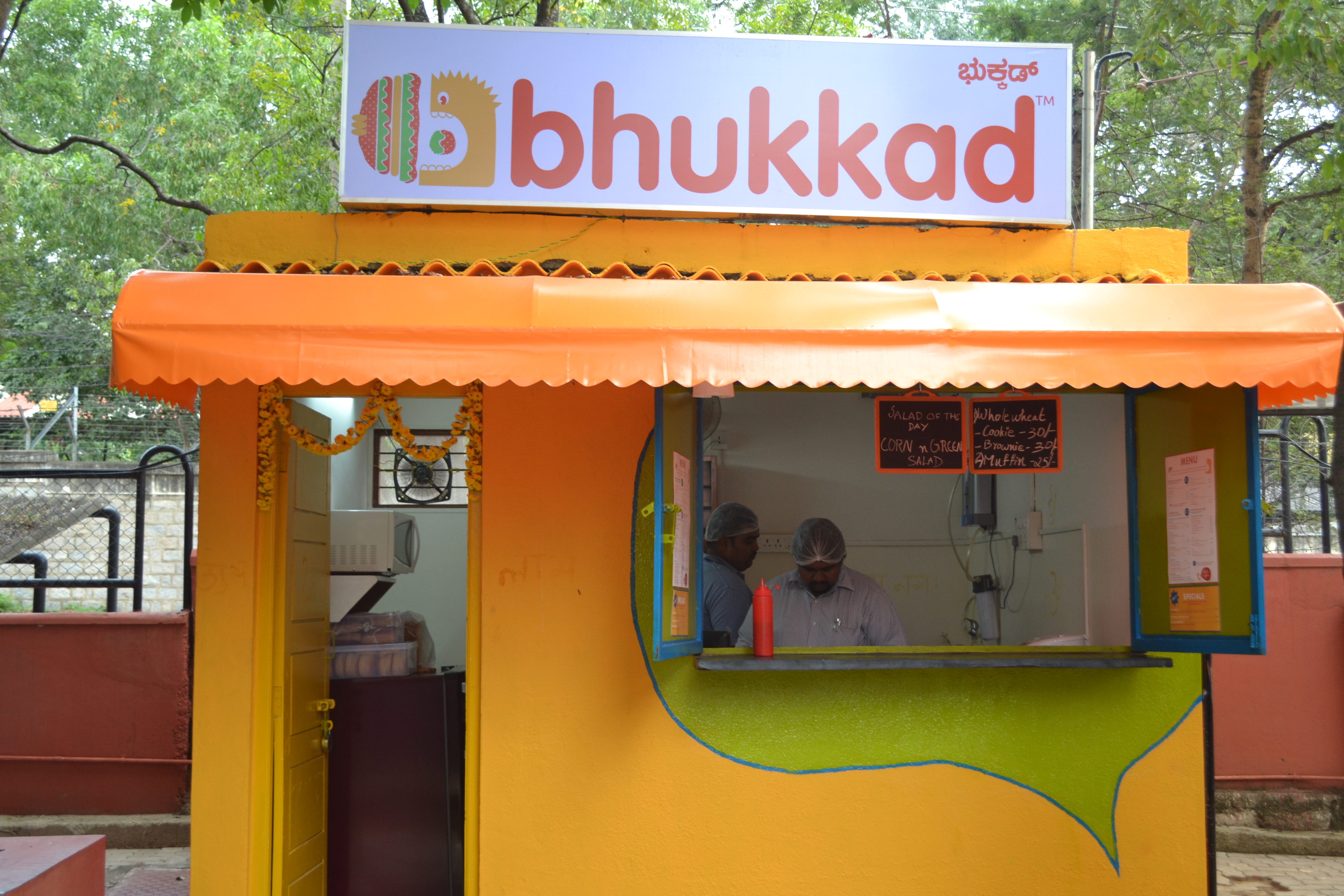Coconut tree is a wonder tree and we thought we have explored all possible uses until Mumbai-based Jayneel Trivedi recently came up with the idea that coconut dried shells can be an excellent ingredient in building affordable homes. It can practically replace wood thereby saving trees from being chopped. He now has a prototype of a home which he is all excited about.
He has started the process of collaboration with government agencies, especially in Mumbai, to turn this into a highly scalable venture. If he succeeds, 90% of the shells that are now wasted can be put to good use. More than that, the cost of owning a home will come down significantly. India is the third largest grower of coconut and the possibilities seem immense.
The dry coconut shells now are a menace. They are not only known to aid mosquito borne diseases, but are difficult to dispose. So, the home project solves twin problems. Excerpts of views and information Jayneel shared with SustainabilityNext
Cost
The material needed for the house mainly consists of scrap metal, scrap wood, PU coating for coconuts, mud plaster and plants. The cost for a typical house of 8’ x 8’ would be Rs. 15000/-.
Scaling and Collaboration
For implementing this concept on a mass scale, we are proposing to the Government of Maharashtra to use tender coconut shells in its initiative on ‘house for all’ which will be cost effective and eco-friendly.
For urban use, presently we have already spoken to the Municipal Commissioner of Mumbai for support in procuring and drying of tender coconut shells which can then be cut/processed by automation on a large scale in the city. It can be implemented in other cities as well. This can be easily implemented in the rural areas where land and coconuts are in abundance.
Prototype
We have made prototype of a 6’ x 6’ coconut house in which each wall is designed with different concepts. One is an open wall – where we have exposed coconut shells on the partition wall, second one is mud wall – where we have plastered the coconut wall with mud, third one is internal wall – where we have created a transparent partition wall with coconut and bamboo mesh and the fourth one is garden wall – where we have created a vertical garden from coconut shells. The roof can be of traditional style of thatch roof or clay tiles, however, we use coconut shells as part of the roof to reduce heat conduction.
Wider Application
The home can be customized based on individual requirements. Although the concept is demonstrated for low cost housing, it can also be used for conventional buildings as well. We can use these tender coconut shells as insulator for walls as well as for the slab. In the technique, inverted coconut shells are laid on the roof and on walls. The spaces formed in between are filled with plain cement concrete or lime concrete or mud.
Process of Building
We used coconut whole and cut it into half. They were then sun dried for more than a week followed by painting and coating. Other materials like metal and wood were purchased from scrap and assembled. We made a metal framework fitted on the ground and we used scrap wood to make wall partition. Later, dried coconut shells were used to make the coconut house in about 12 days.
Coconuts as Insulators
Heat conduction can be lowered in several ways by using insulating materials such as paints, tiles, or by increasing thickness using air cavities. Air being a natural insulator, use of cavities is similar to use of an insulating material. If an air space is left between two layers it acts as a barrier to heat transfer. We used a simple principle of air cavities through coconut shells on the roof and wall surface, to reduce heat which keeps the house naturally cool.
The advantage is that the temperature is reduced by about 4-5 degrees which eliminates the need of air coolers and air conditioner which consumes lot of water and energy. Based on the principle of physics – air feel cooler when blown through a small hole and warm through a big one? So we have taken advantage of the coconut shells to cool the air. One side of used coconut which is cut has a big opening. We made a small opening on the other side of the coconut. When we fit coconut on the wall with the big opening outside and the small opening inside then the air entering from the coconut will automatically reduce in temperature before entering the house which acts as a natural air cooler.
Coconut Mulching
Mulch is a material placed on the soil surface to maintain moisture, reduce weed growth, mitigate soil erosion and improve soil conditions. Waste coconut shells can be a great material which can be used for mulching in an eco-friendly way. Smash the shell into smaller pieces of about 1-2 cm and use it as a ground cover for farming, garden area or even small flower pots.
Groundwater Recharge
Tender coconut shells can also contribute towards recharging the ground water which can help increase the water table. First we need to have a dugout in the ground. We can fill the dugout places with coconut husks/shells and this will retain more water and also the evaporation will be very less. You can also create multiple heightened blocks in your farm so that the water will be absorbed by the soil. This process will ensure you will have adequate water throughout the year. This is just the beginning. We are exploring more ways how we can use these waste coconut shells which can lead us to a greater standard of sustainable living!
Jayneel Trivedi is an architect who works in the sustainable living space.
He has worked with Govardhan Eco Village project (Mumbai), a 100 acre sustainable farm community and retreat center. This project has won national and international awards like IAA Olive Crown Award, SKOCH Platinum Award, Green Apple Award (UK), Asian Leadership CSR Award (Dubai), Aqua Excellence Award. Jayneel is also associated with Indian Green Building Council (IGBC) that spearheads the green building movement in India.










My sincere gratitude to Benedict for featuring our initiative and to help promote sustainable living.